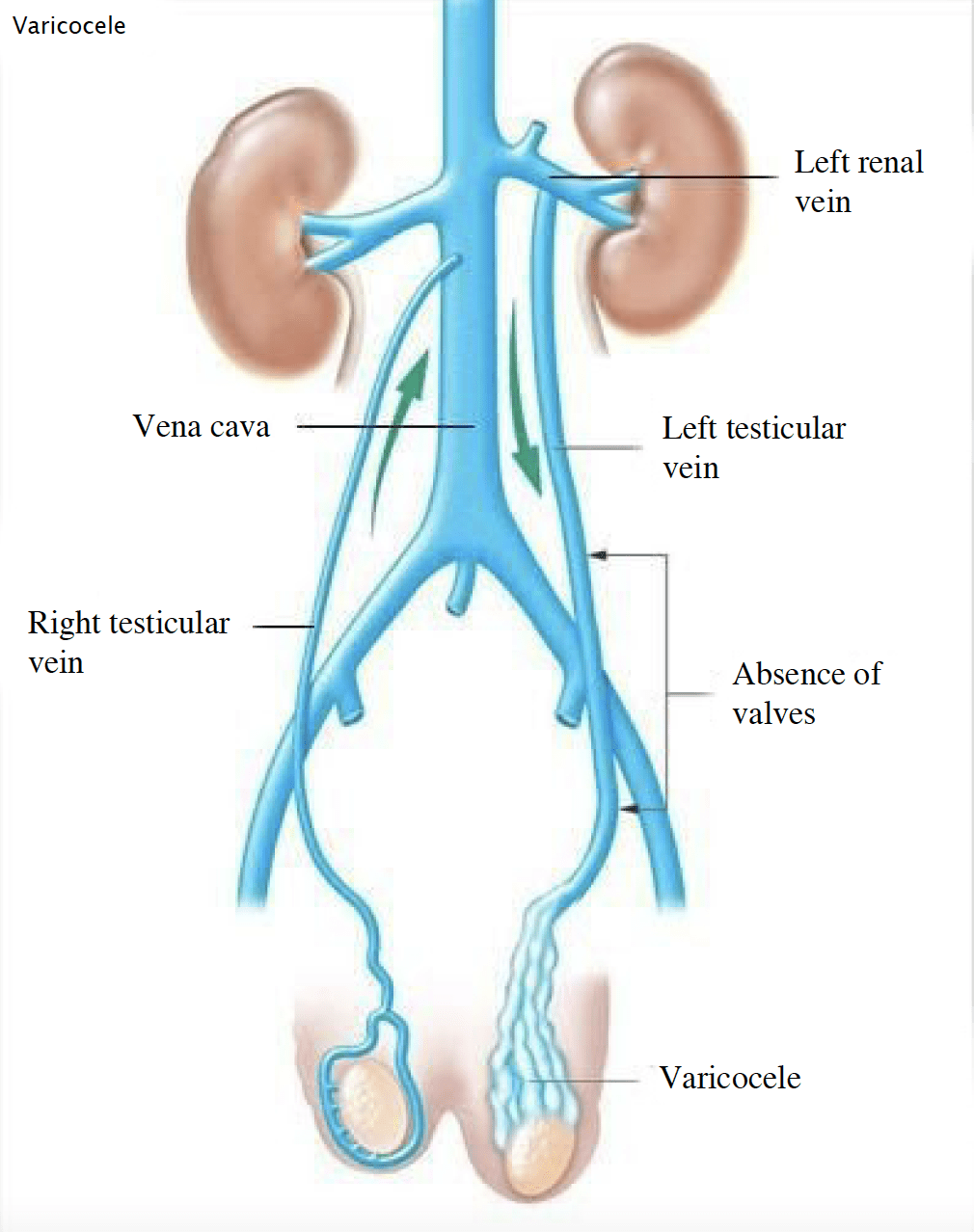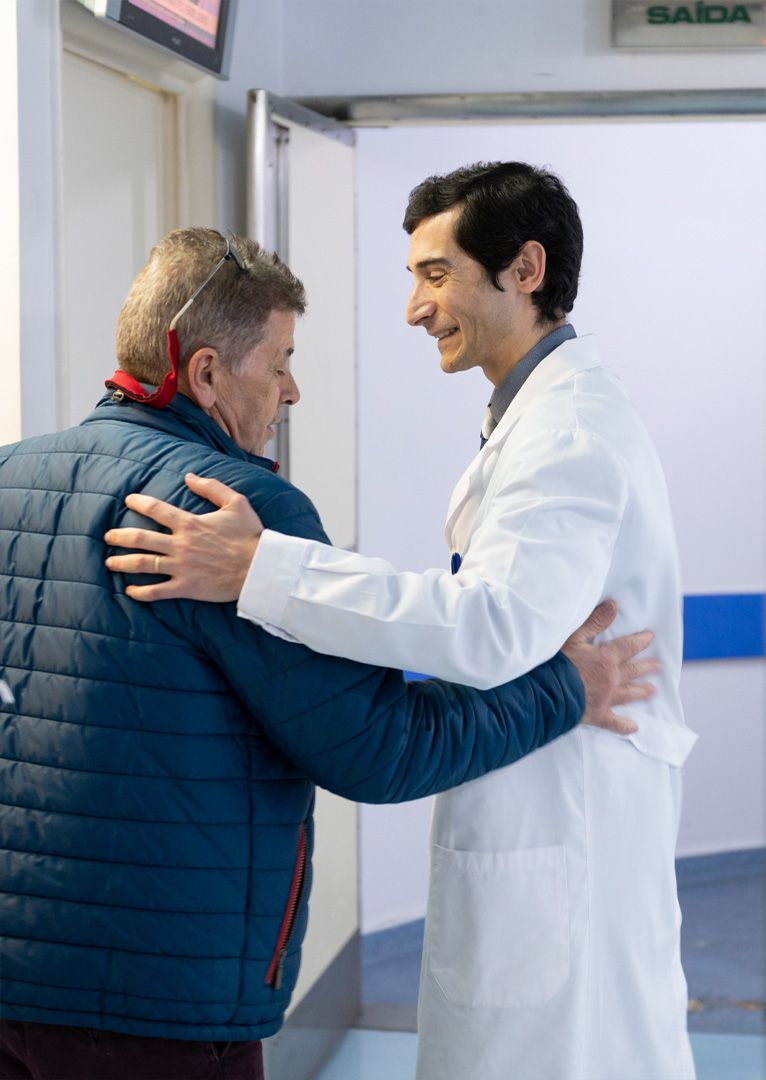Varicocele
What is Varicocele?
Varicocele is the dilation of veins or varicose veins around the testicle. They are located around the testicle, inside the scrotum (skin that involves the testicles), and are much more frequent on the left than on the right.
The veins responsible for the varicocele are called spermatic or testicular veins, and they pass inside the spermatic cord, in the inguinal route.
Varicocele is more frequent on the left because the left testicular or spermatic vein drains into the left renal vein at a right angle, while the right testicular or spermatic vein drains into the inferior vena cava at a more favorable angle.
Which ages are more affected?
Varicocele is a quite common health problem for men, affecting up to 15% of the young adult population (its peak incidence), meaning that it is more frequent between ages 15-25. However, it can be detected in any age group. There are 3 levels of varicocele:
Level I – small and not visible varicocele. It is palpable only with the increase of abdominal pressure (cough or strain the stomach);
Level II – medium-size varicocele, not easily visible, but easily palpable.
Level III – a big varicocele, easily visible and palpable.
Why do I have a Varicocele?
It is not known the exact cause of varicocele. It arises when the valves inside the veins of the spermatic cord become insufficient.
In these cases, venous blood starts to flow back instead of going up from the testicle. It starts to flow back, accumulating itself around the testicles, inside the scrotum.
This causes swelling or edema with vein enlargement, leading the scrotum to increase its size and the possibility of some pain.
The weight excess can be a risk factor to varicocele formation, but in most cases, its cause is not known.
How can I treat varicocele?
There are two options to treat varicocele: surgery or embolization. Surgery is more invasive. Embolization allows faster recovery, with less pain and fewer adverse effects.

What are the symptoms of varicocele?
It is usually testicular pain, a feeling of heaviness on the testicle, or an increase of the scrotum size (skin around the testicle). Since it is more frequent on the left side, usually these complaints are related to it.
The pain and feeling of heaviness on the testicle caused by the varicocele differ in intensity. They can be only slightly or very intense, they increase with physical exercise, get worst during the day, and improve when the patient is laid down.
Since the venous congestion on the inside of the varicocele depends on gravity, these symptoms get worst while standing and get even worse during the day. It may not cause pain or symptoms, and the only manifestation can be the delay of the testicular development (when affects children) or difficulty to get pregnant (when affects adults).
Varicocele can lead to spermatozoa dysfunction, resulting in sterility.
After treating the varicocele, spermatozoa usually got a normal function again.
Even when varicocele is unilateral, it can lead to dysfunction of spermatozoa produced in both testicles.
At an early stage, varicocele is not visible. However, with time, it can increase its size and become visible.

What are the symptoms of varicocele?
It is usually testicular pain, a feeling of heaviness on the testicle, or an increase of the scrotum size (skin around the testicle). Since it is more frequent on the left side, usually these complaints are related to it.
The pain and feeling of heaviness on the testicle caused by the varicocele differ in intensity. They can be only slightly or very intense, they increase with physical exercise, get worst during the day, and improve when the patient is laid down.
Since the venous congestion on the inside of the varicocele depends on gravity, these symptoms get worst while standing and get even worse during the day. It may not cause pain or symptoms, and the only manifestation can be the delay of the testicular development (when affects children) or difficulty to get pregnant (when affects adults).
Varicocele can lead to spermatozoa dysfunction, resulting in sterility.
After treating the varicocele, spermatozoa usually got a normal function again.
Even when varicocele is unilateral, it can lead to dysfunction of spermatozoa produced in both testicles.
At an early stage, varicocele is not visible. However, with time, it can increase its size and become visible.
Get in Touch.
Submit the form to schedule your appointment with Dr. Tiago.
Get in Touch.
Submit the form to schedule your appointment with Dr. Tiago.




